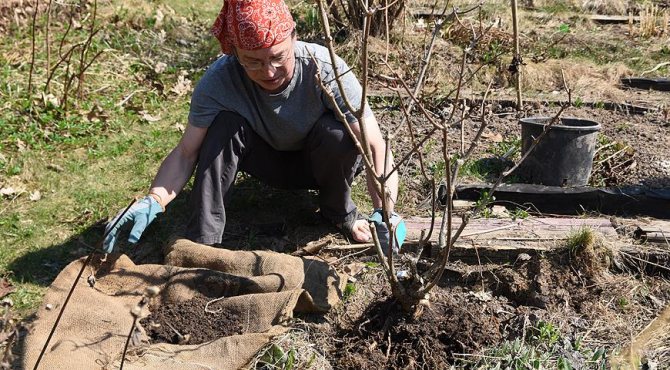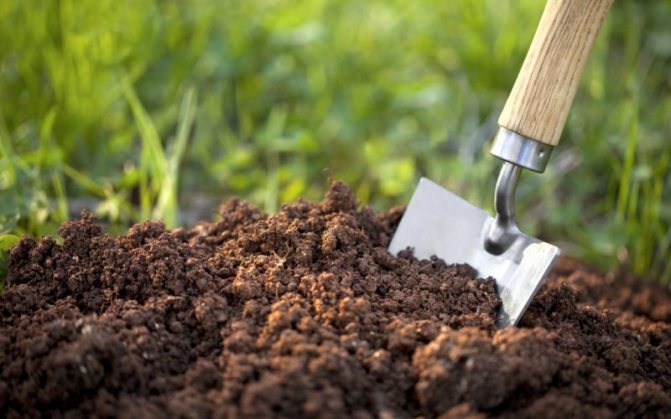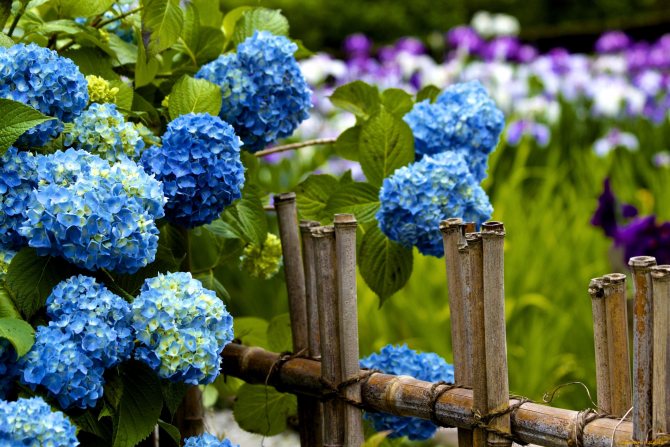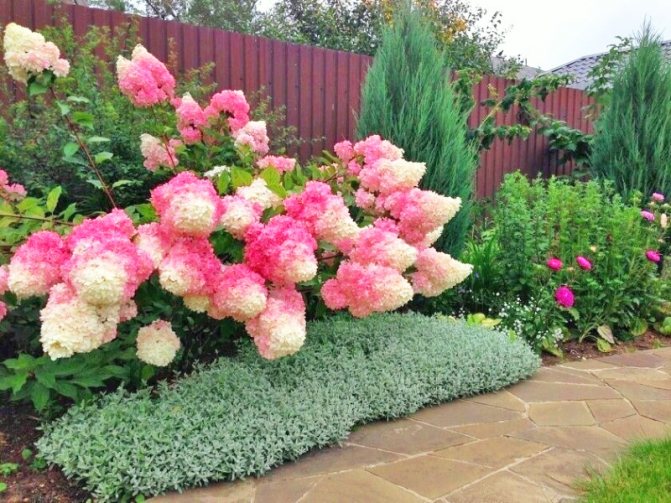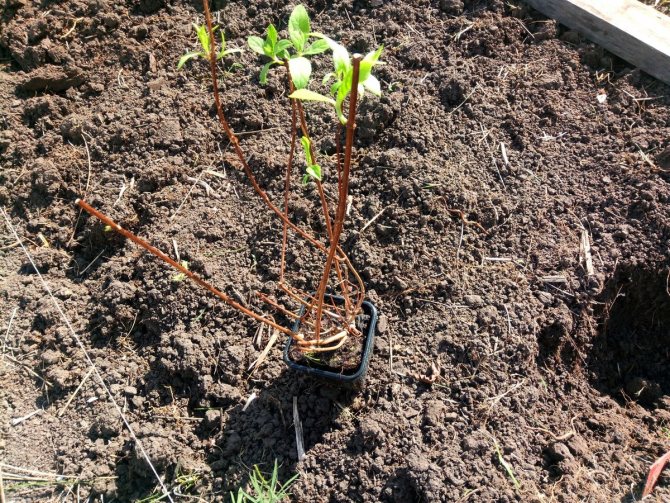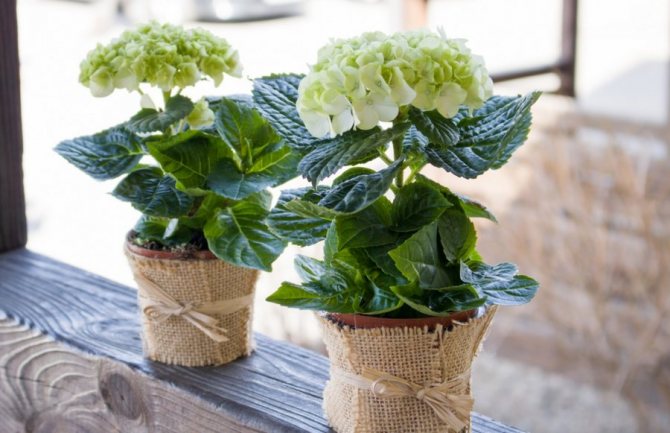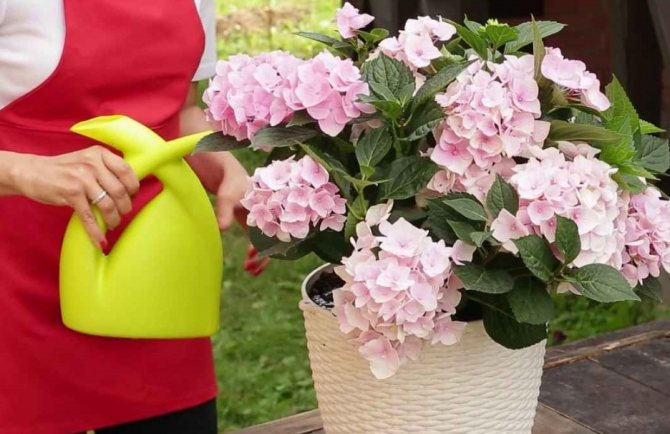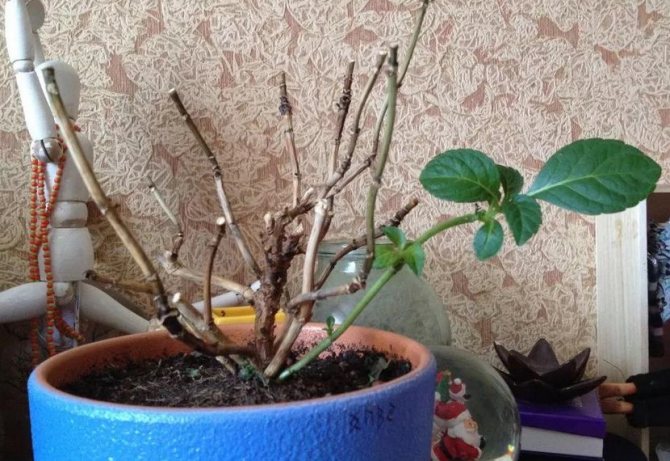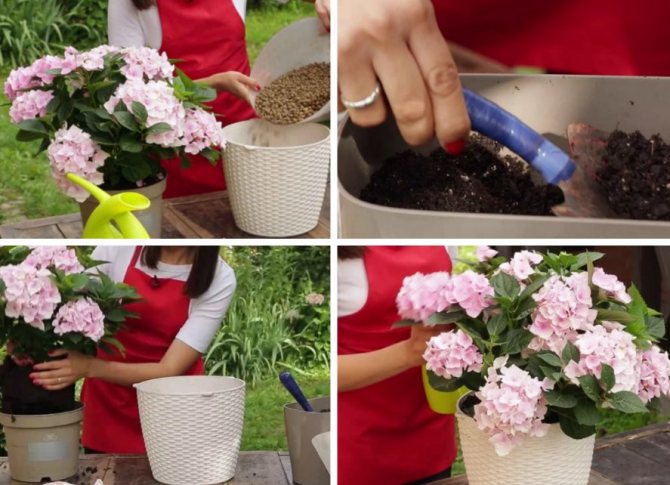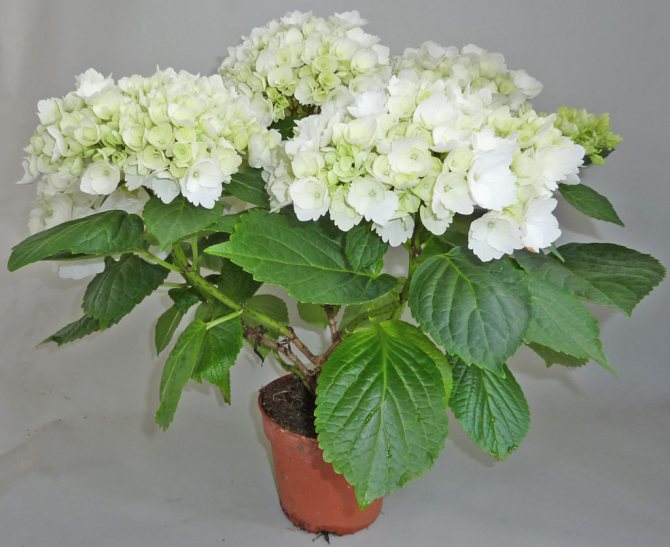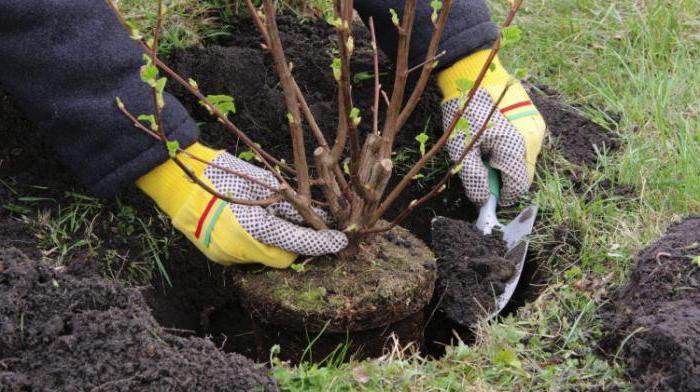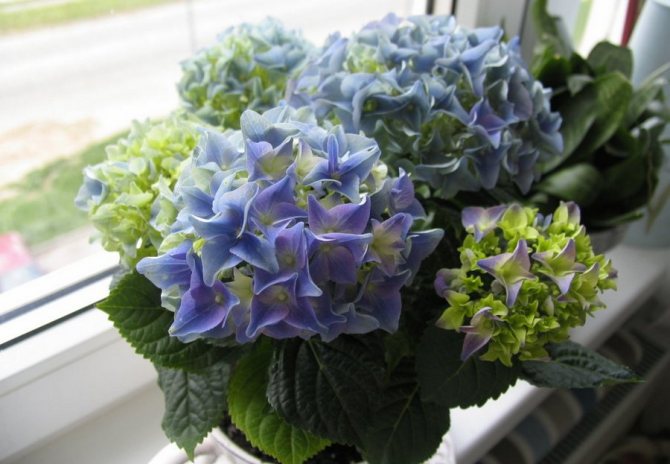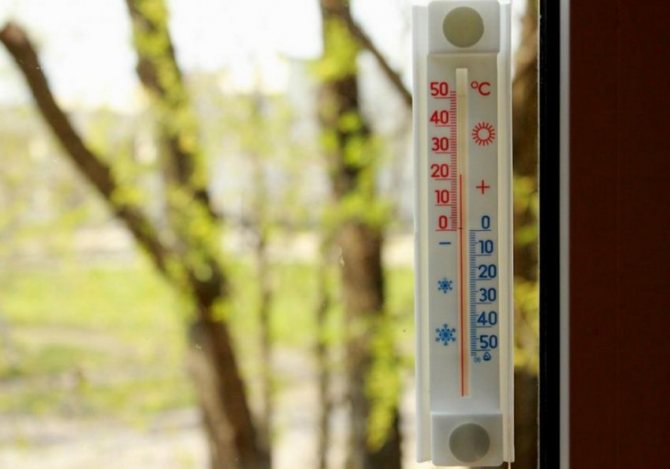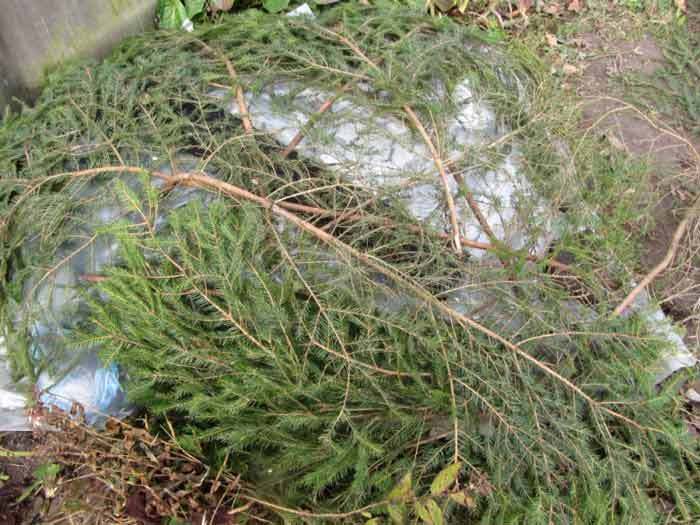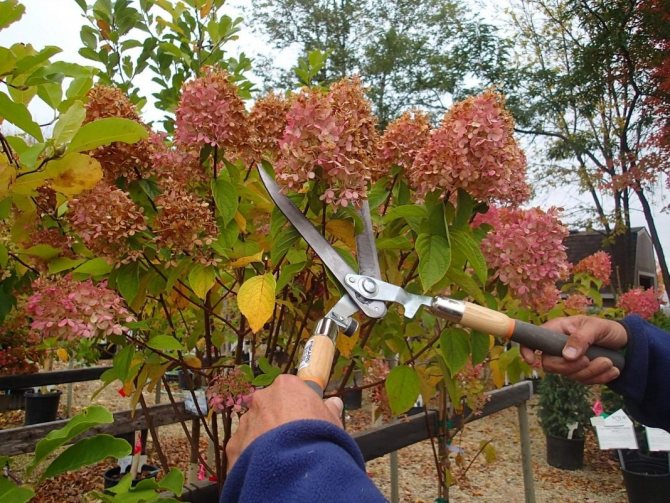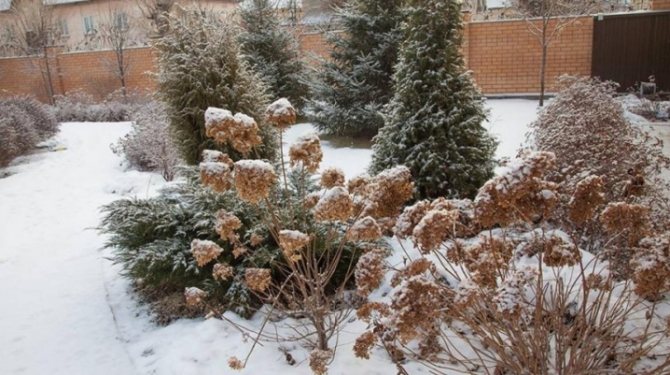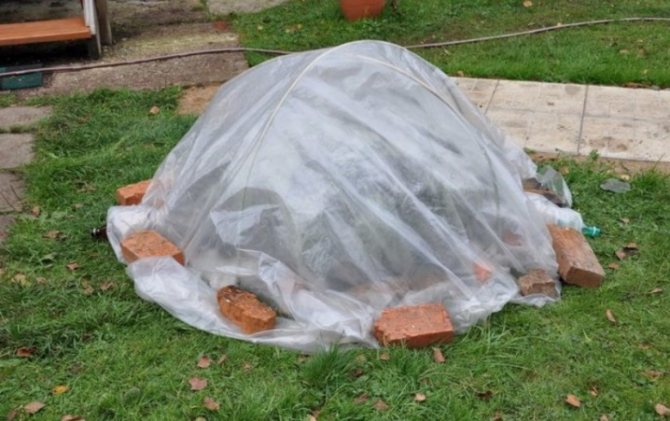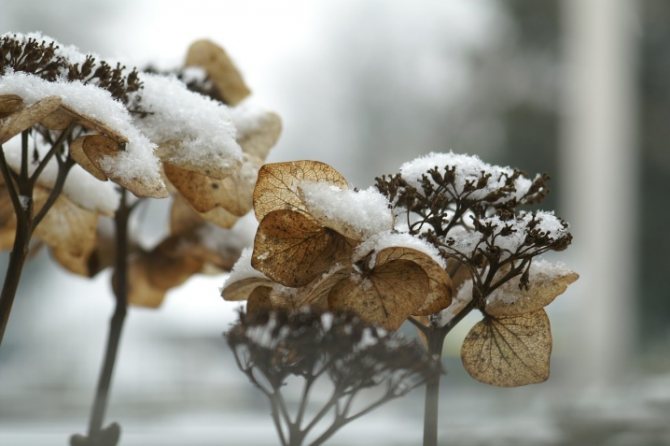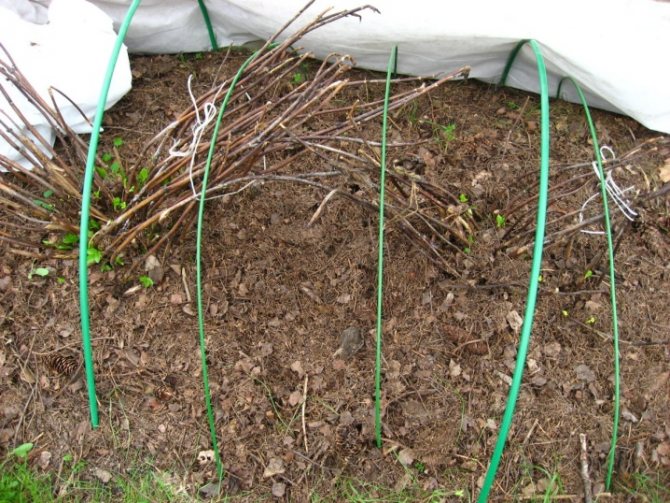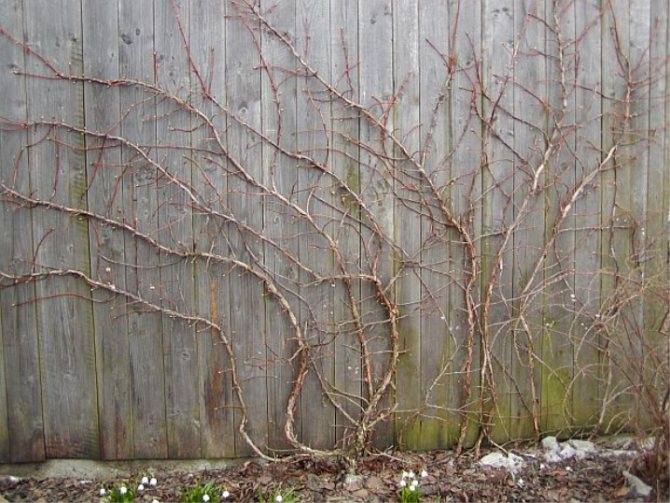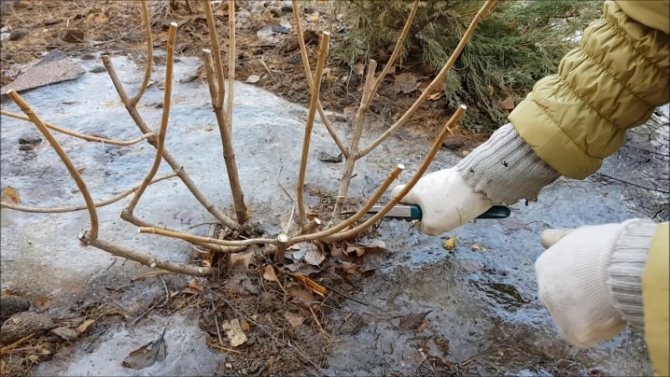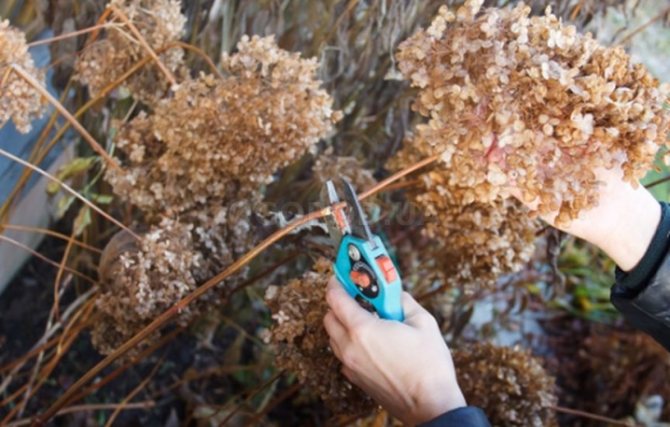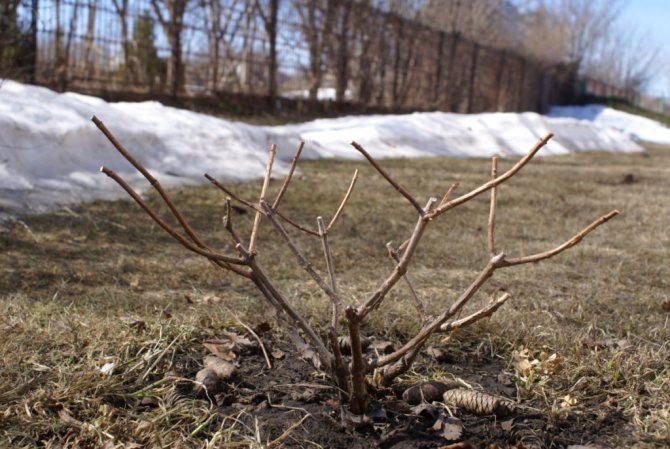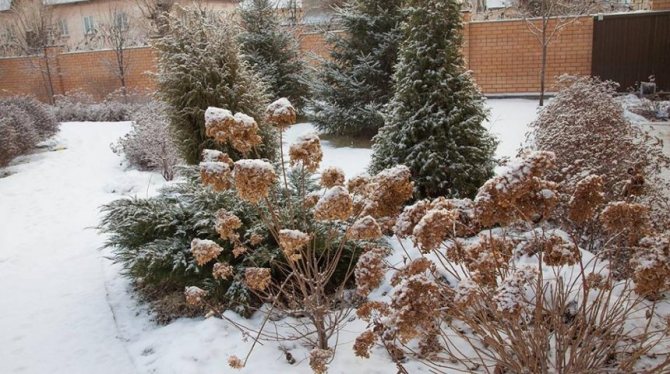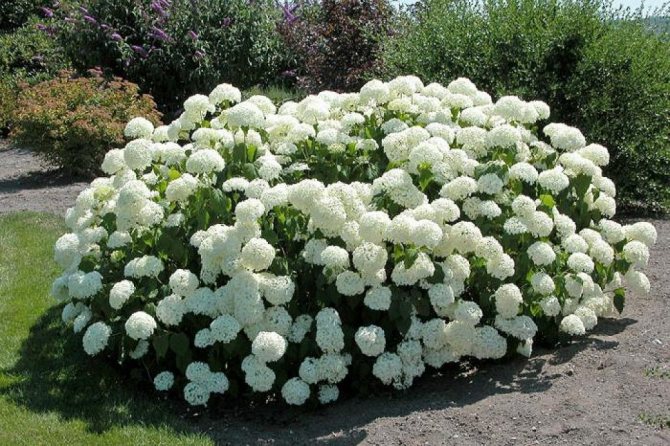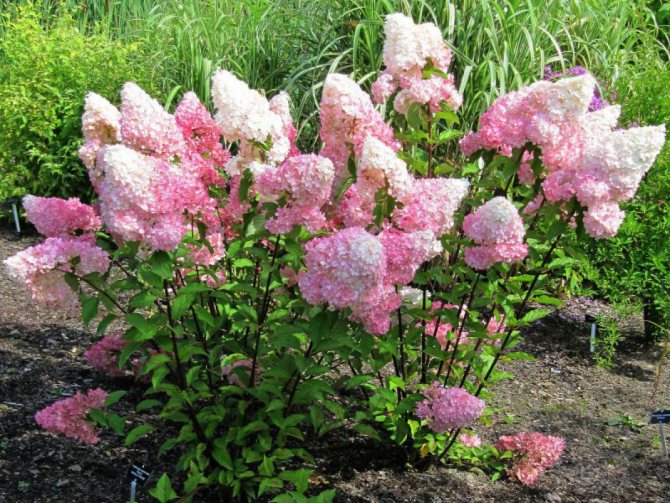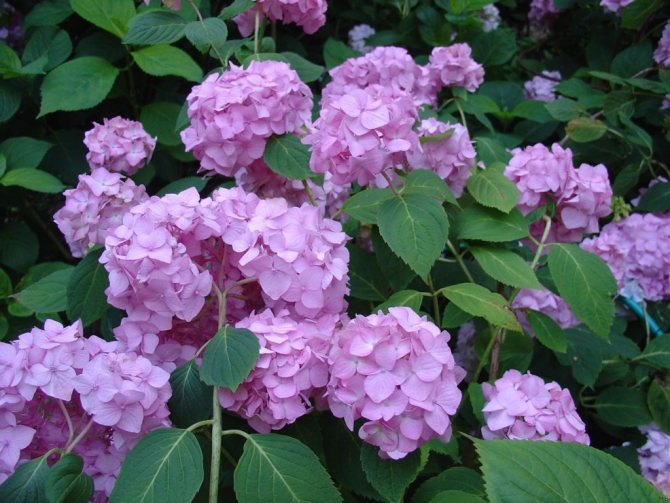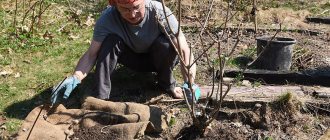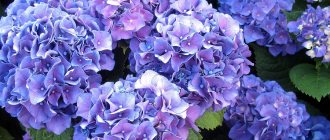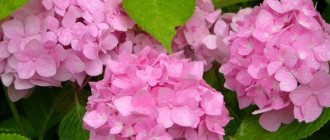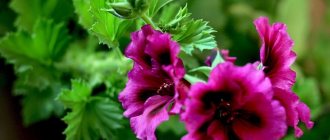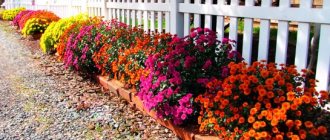
Hydrangea is one of the most popular flowering plants for backyard cultivation. This beauty blooms brightly and luxuriantly, is undemanding to care for and grows quickly. In order for the hydrangea to delight longer with its abundant flowering, you should study all the nuances of planting a plant, decide when to plant - in autumn or spring - and follow the instructions for gardening exactly.
When is the best time to plant
The choice of season for planting hydrangeas in open ground depends on the climate, as well as on the capabilities and needs of the gardener.
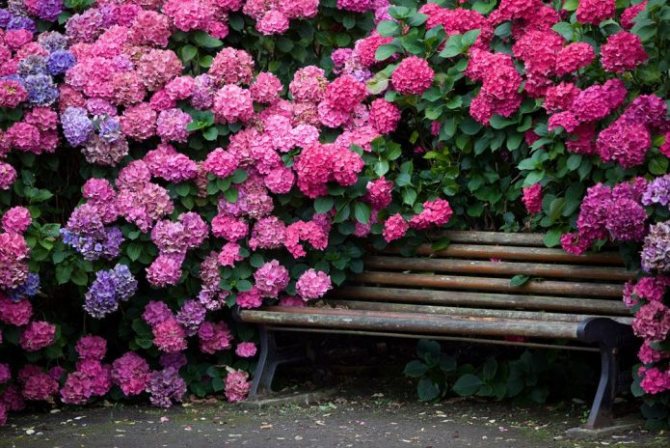

Pros and cons of autumn planting
Autumn planting for hydrangeas should be chosen when there are seedlings with a well-developed root system.
It is better to do autumn garden work in warm southern regions with a mild climate, where there are no severe frosts in winter.
The autumn period for planting hydrangeas has many advantages. Here they are:
- the bush will take root well;
- already in the next season, hydrangeas will begin to bloom;
- preparation for an autumn planting is easier than for a spring one;
- protection against pests;
- autumn seedlings do not require a lot of nutrition.
But there are also disadvantages:
- you will have to build protective structures for the winter;
- heavy rains can provoke the appearance of fungus.
Pros and cons of spring planting
But if there are young cuttings, then it is better to keep them until spring, as they simply will not take root at low temperatures.
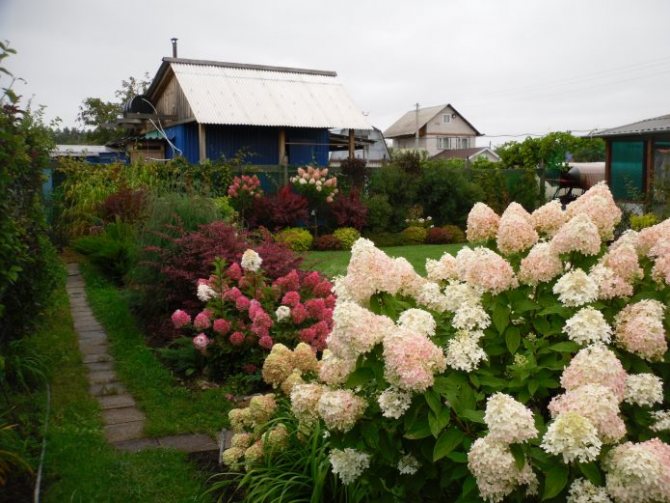

Benefits of spring planting:
- easier rooting in warm weather;
- suitable for regions of the middle lane and north.
- flowering will begin only after the season;
- long and difficult preparation for landing;
- young seedlings are very demanding for watering and shading;
- there is a high probability of being hit by various pests.
Helpful information
View other materials on caring for room hydrangea:
If you find an error, please select a piece of text and press Ctrl + Enter.
Proper autumn care and preparation of hydrangeas for winter will increase the chances of a successful wintering and luxurious flowering of the shrub in the coming season. Knowing the characteristic features of crop varieties, it is easy to create optimal conditions for a dormant period. In this case, it is necessary to focus on the climate of the region where the flower is grown. For example, preparing a garden hydrangea for winter in Siberia involves not only autumn pruning and high hilling of the bush.
Dates of autumn disembarkation
It is necessary to plant hydrangea in open ground in autumn when the weather is still mild and warm without night frosts. Choose September - early October for planting.
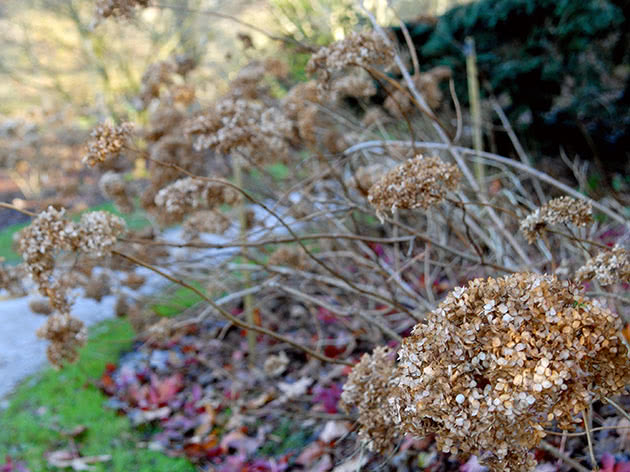

House flowers should be planted immediately after they bloom, so that before frost the plants have at least 30 days for adaptation and rooting.
Planting hydrangeas in the fall: a table of dates by region
| Region | Approximate time |
| Southern regions | September - October (the end of October is also allowed, if the weather permits) |
| Middle lane | September |
| Moscow and Moscow region | September - early October |
| Leningrad region | Not planted in autumn |
| Ural and Siberia |
Lunar landing
The most successful dates of the lunar calendar in 2020 are:
Choosing a place for planting
When choosing a place for future hydrangeas, you should pay attention to the distance to the fence: it should be as large as possible.It is better to choose a site that will be illuminated by the sun in the afternoon and shaded in the afternoon.
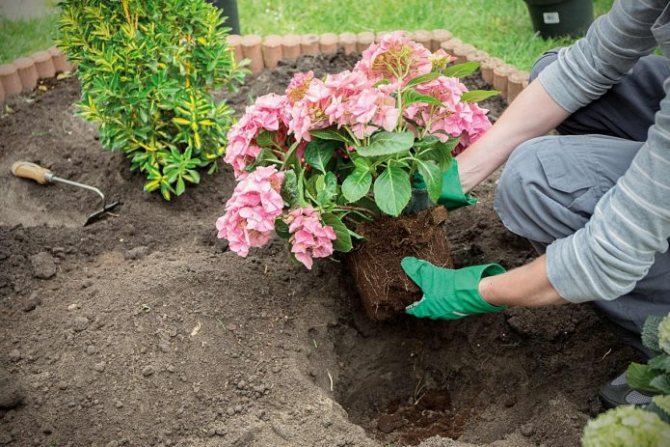

There should be no "neighbors" around the bush about 1.5 m. The green mass of hydrangeas is extensive, so that other plants nearby will interfere with them. The soil should be loose, fertile, but loamy areas will also work.
To achieve the desired level of acidity of the soil (slightly acidic), add to it the bark of coniferous trees, needles or a peat mixture.
The approximate composition of the soil for planting includes the following components: humus, garden soil, sand and peat in a ratio of 2: 2: 1: 1.
Description of room hydrangea
It is necessary to familiarize yourself with the description before purchasing the variety - some varieties differ significantly from each other in height, size, colors and other parameters.
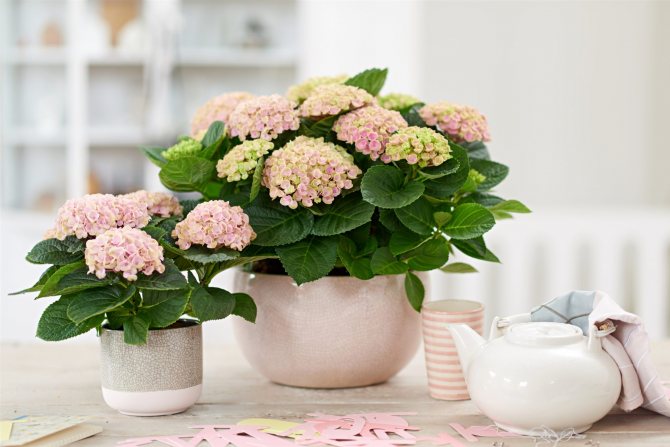

Indoor hydrangea
Are there indoor hydrangeas
Indoor hydrangea will adorn any room - lush inflorescences, wide leaves of a juicy green color, lack of aroma (therefore, it does not attract bees and other insects).
Domestic varieties are dwarf subspecies of garden varieties. Small bushes vary significantly in height, although individual owners grow domestic species up to 1.5 m.
Origin
Domestic hydrangea is a subspecies of the plant introduced to Europe in the XIV century. Initially, it was intended exclusively for the well-to-do strata of the population - luxurious inflorescences were associated with wealth and the special position of the owner. Hydrangea gained particular popularity in England and France.
The shrub is widespread in Asia and America. The largest number of varieties grows in Japan and China. Some frost-resistant species are also found in Russia - mainly in the Far East.
How is it different from a garden hydrangea
The plant looks most familiar on the plots, but there is no need to be afraid to grow shrubs at home - home hydrangea is considered a rather unpretentious flower (if you know certain nuances).
Care differs only in scale. Indoor varieties love water, do not tolerate extreme heat (in summer weather that is too sunny, it is better to remove it from the windowsill).
For reference! The main difference between garden and indoor hydrangea is size, some varieties grow only up to 20 cm.
Features of the
Those familiar with the garden hydrangea know that it is a large bush with lush inflorescences of various shades. Popular names - "destiny", "bride". Miniature varieties practically do not differ:
- inflorescences are spherical, flowers are racemose in shape, in the form of an "umbrella", corymbose;
- leaves are large, saturated green, framed with small teeth;
- the root system is rapidly developing (often visible from underground in pots).
With proper pruning, the leaves are arranged in a heap from below, and flowers bloom from above, forming a bright cap.
Pros and cons
Hydrangea is a special flower. In order not to ruin the plant, you need to know about the basic rules and requirements for care.
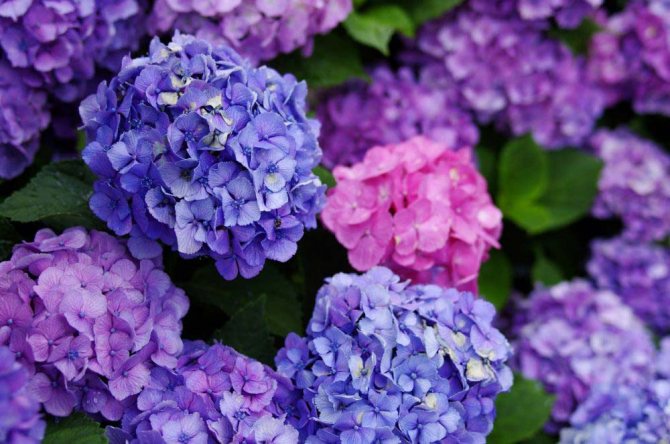

Flowers of purple hydrangea close up
Shrub Disadvantages:
- increased requirements for acidity and composition of the soil (abrupt changes, an excess or absence of minerals leads to a complete absence of inflorescences, the death of the bush);
- abundant watering - the hydrangea needs to be watered often (leaving it for a few days for the sake of a trip will not work);
- the need for a permanent place of growth - the plant does not like frequent transplants, a change in its habitat.
For some growers, grooming can be difficult - this often scares off beginners. You should not worry, many care products are sold ready-made, the main thing is to get ready.
Benefits of indoor hydrangeas:
- lack of aroma - does not attract bees, other insects;
- bright, saturated shades that you can change yourself (from pink to blue, for example);
- lush inflorescences will look great in any interior, attract the attention of others.
Hydrangea is a perennial shrub, so it will delight the attentive owner for several years in a row.
Planting instructions
Planting different varieties of hydrangea is practically no different. It is necessary to plant a plant in autumn only after the final formation of the root system of the plant.
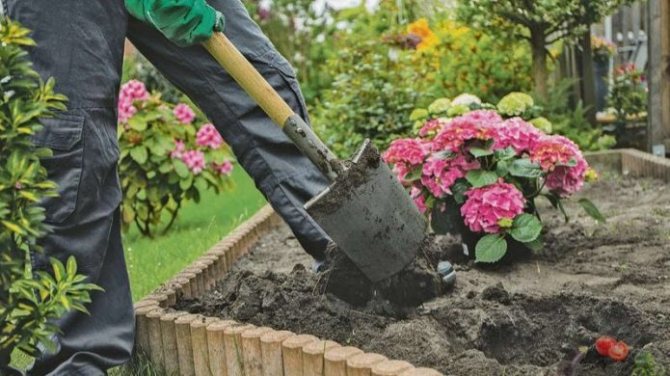

- Water the 0.5m by 0.5m planting hole a few hours before planting.
- In the center of the hole, build a mound of soil mixture (take 1 part of fertile soil and sour peat each).
- Place the seedling on a mound, straighten the roots so that they do not bend. Make sure that the root collar of the seedling is slightly above ground level.
- Start filling the hole with soil mixture.
- Compact the soil.
- Water the seedling (3-4 buckets of water per bush). Add a weakly concentrated solution of the Kornevin biostimulator.
Planting hydrangeas: video instruction
Diseases and pests, means of combating them
Any cultivated plant is exposed to various factors, including sometimes the development of diseases, colonization of harmful insects occurs. Hydrangea is no exception, although it is considered a fairly hardy plant.
Typical diseases and pests:
- gray rot - appears from excessive humidity, the leaves are treated with Bordeaux liquid;
- powdery mildew - also from high humidity, is treated with copper-containing solutions;
- aphids, spider mites - appear in dry air and moist soil, soap solution, Karbofos act against insects;
Attention! If a nematode is found on the bushes, the plant will begin to dry, it will have to be destroyed. Such a bush is not subject to treatment.
Hydrangea care after planting in the fall
For young seedlings to survive the winter successfully, they need shelter. In the southern regions, you can do without it, however, you should be sure that frosts are not expected.
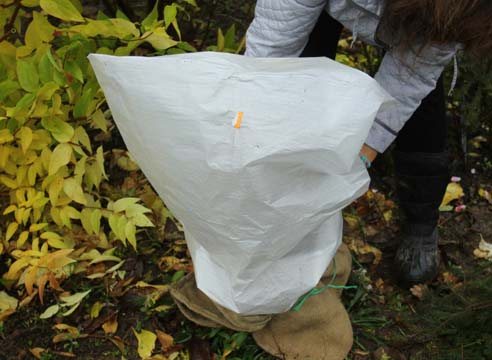

First of all, you need to spud the bush with sawdust, peat mixture and straw cutting (the height should be about 0.3 m). Tie all shoots in a bunch or bend each one separately to the ground and secure. Cover everything on top with spruce twigs, burlap or agrotechnical cloth. In spring, the shelter should be removed to prevent condensation inside the greenhouse.
Bright and lush hydrangea does not require special care, although its planting is fraught with some nuances. It is best to plant the plant in the fall to start enjoying the beautiful bloom of this garden queen next spring.
- October 29, 2018
- Country house
- Lyudmila Storozhenko
Treelike hydrangea is a beautiful shrub that many owners of private houses and cottages grow. The plant will become a real decoration of landscape design. To breed a hydrangea, you need to know a few rules for caring for it. This is a simple procedure. How hydrangeas are planted in a tree in autumn will be discussed in detail later.
Plant features
Treelike hydrangea belongs to the hydrangea family. The plant is native to North America. The height of this beautiful shrub can reach from 1 to 2 m. It consists of thin shoots that determine the rounded shape of the plant. The branches are covered with a little fluff and leaves with a bright green tint.


The inflorescences have a large diameter of about 15 cm. They are composed of small whitish flowers, the width of which is about 2 cm. The leaves of the bush have long thin petioles and ovoid shape. Hydrangea blooms beautifully from July to October. After that, the seeds ripen.
Considering the description of a tree hydrangea, its main distinguishing features should be noted:
- good winter hardiness, which allows you to grow it even in cold regions;
- cuttings root well;
- even in a very cold winter field, the plant grows actively, restoring its lush structure.
The listed features make it possible to breed the plant almost everywhere. However, there are many types of tree hydrangea. Each owner of a personal plot can choose the best option in accordance with the existing landscape design.
Popular varieties
In our country, several varieties of tree hydrangea are grown. You can choose an option to your taste.
One of the most famous is the Annabelle variety. It attracts gardeners with its large inflorescences. The diameter of the snow-white baskets is about 25 cm wide. The plant is unpretentious, it grows quickly. The bush reaches a height of 1-1.5 m. In width, it can grow up to 3 m. Flowering lasts for three summer months.
The second known variety is Grandiflora. The plant looks very impressive. Blooms profusely for a long time. Moreover, the inflorescences change shade several times. When they first bloom, the color of the baskets is pale green. Then gradually they become snow-white. Towards the end, the inflorescences become creamy white. This is a rather tall bush that reaches 2 m in height. Its width is about 3 m.
The original flowering about ("pink annabelle"). This plant was developed from the Annabelle hydrangea. This is the first treelike hydrangea to have pink flowers. She has some features to consider when leaving. If, after the first flowering, bush pruning is carried out, the hydrangea blooms again after 1.5 months. This variety has won numerous awards in international horticultural competitions.
Choosing the time and place for boarding
Planting tree hydrangea in open ground occurs in autumn or spring. The choice of the season depends on the characteristics of the climate and the plant variety itself. So, tree hydrangea is a rather unpretentious plant. Therefore, you can plant it on the site in the fall. During the time that will pass before the onset of severe cold weather, it will have time to take root, as it grows quickly.
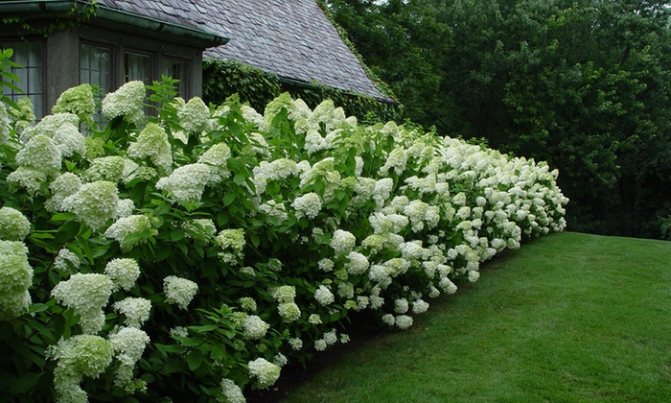

However, it should be said that when frost begins in September, it is still worth postponing this procedure until spring. Planting hydrangeas in a tree in autumn in open ground is possible only in regions with a warm climate. Here, seedlings are planted in the ground in September or early October. Large-leaved varieties of hydrangeas are definitely worth planting on the site in the spring.
It is important to choose the right place for planting a plant in open ground. Hydrangea develops well if drafts do not blow on it. Therefore, you need to choose areas protected from the winds. Direct rays of the sun can hit the leaves of the tree hydrangea only until the first half of the day. After that it should be in the shade.
Before planting hydrangeas, the soil must be loosened. The plant grows well only on air and permeable, moderately moist soil. If the soil is heavy, coarse sand is added to it. The acidity of the soil should be neutral or elevated. However, the plant does not like chernozems, manure-humus soils. Lime soil is also not suitable for growing hydrangeas.
If the land does not meet the listed requirements, it must be acidified with leaf humus. You can also add shavings, needles, bark to the soil. When digging, these ingredients are added to the soil. The acidity of the soil is reflected in the flowering of the tree hydrangea. If the soil reaction is slightly alkaline, the inflorescences will have a pink color. In acidic soil, the baskets acquire a bluish tint. If the acidity is neutral, the flowers will be white or creamy.
Panicle hydrangea - outdoor care before wintering
Panicle hydrangea, the care of which in autumn is important for future flowering, will be happy with the last, fourth, feeding of the season.It is easiest to use ready-made preparations as fertilizers. If you wish, you can prepare top dressing yourself. To do this, dissolve 1 tbsp each in 10 liters of water. superphosphate and potassium sulfate and pour under the bush. A second procedure is not required.
You can also dig a bucket of compost or humus under the panicle hydrangea bush, which will not only saturate the soil with useful substances, but also warm the roots of the plant in winter.
There is no need to water the hydrangea in the fall. The exception is very dry weather, but this is rare in the middle lane. If you continue watering, then with the onset of cold weather, cracks may appear on the shoots from excess moisture.
When the panicle hydrangea sheds its leaves, carry out a preventive treatment against pests with a 3% solution of Bordeaux liquid.
Propagation by cuttings
When considering a step-by-step guide on how to plant a hydrangea in the fall, several features of this process should be noted. You need to choose a suitable method for plant propagation. You can resort to such techniques as cuttings, dividing the bush. It is also practiced among domestic gardeners to breed hydrangea with tree layering.
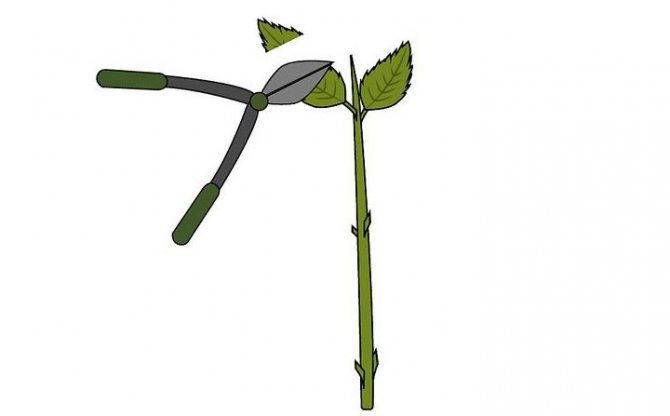

A simple way, according to reviews of experienced florists, is grafting. In this case, the plant, if all actions are performed correctly, takes root by 100%. In this case, green cuttings are used to breed hydrangeas. They are harvested in two periods.
The first time the cuttings are harvested at the beginning of summer. But at the bottom of the cutting, there must be a piece of last year's shoot. The second time the harvesting is done in July. It is necessary to have time to do this before the moment of complete lumbering of the escape. For propagation of hydrangeas by cuttings, branches that appeared this year are suitable.
There are special requirements for shoots. Cuttings with 2-3 leaf pairs are suitable for breeding hydrangeas in this way (their plates must be cut in half). The sections must be treated with a growth stimulant, which is usually used for the roots. Next, the cuttings are planted in a greenhouse in a nutritious soil. The bottom pair of buds should be buried in the soil.
The rooting process takes 20-30 days. During this process, the plant needs an increased level of moisture. Therefore, the seedlings are covered with cut plastic bottles.
Layering and dividing the bush
Propagation of hydrangea tree-like is possible by layering. To do this, in the spring, you need to carefully tilt one shoot, pressing it to the ground. One site is left in a small hole, sprinkling it with earth. The deepening should be made small, but long. On top of the shoot there should be only 1.5-2 cm of soil. The shoot must be secured so that it does not rise up. Only the tip of the branch needs to be bent and slightly raised up.
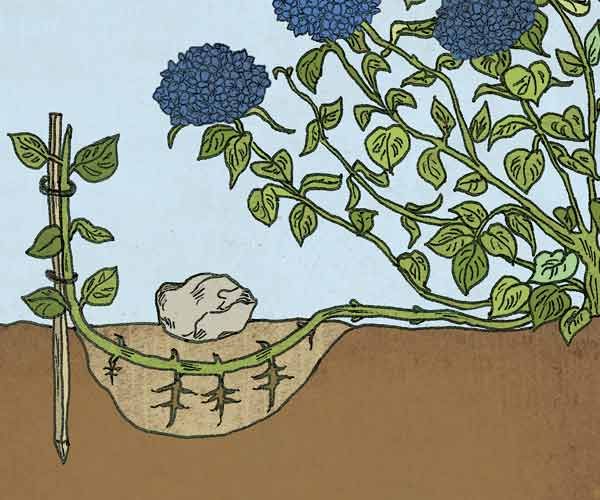

Until autumn, it is poured into the ground several times into the hole. The soil here needs to be kept moist. In a year, the shoot will take root. In the fall, it is cut with shears and planted in open ground in partial shade. Treelike hydrangea can also be grown in the shade. Hydrangea transplanted in this way or by cuttings will begin to bloom in the fourth year of life.
Hydrangea tree seedlings can be obtained by dividing the bush. For this, the plant is dug up. The bush is divided into several parts with a sharp shovel. If the bush is old, an ax may be needed. This procedure is also carried out in the fall. It is necessary to prepare fossa for planting the plant. The bush is cut and then planted in the ground. They take root well.
Shelter methods
To put things in order in the garden for the onset of winter, it is necessary to cover each plant in the proper way. Hydrangeas are thermophilic shrubs, so the cover layer for them should be quite large. The vines and buds, which are located at the ends of the branches, often suffer from frost, therefore the presence of good material to protect the culture is necessary. To prepare the bushes for freezing temperatures, you can choose one of two options.
- On the bush, it is necessary to cut off all thin, weak and abnormally growing shoots, in addition, completely remove the leaves from the bush itself and from the ground. Due to its large dimensions, the bush is divided into parts based on the direction of growth of the branches, which need to be tied together and bent to the ground. The hydrangea vine is flexible and does not break, but for reliability it is better to fix it by placing it on open ground. To insulate the plant, it is recommended to put a non-woven material like lutrasil or agrospan on it, which is sprinkled on top with dry foliage from healthy trees. To prevent rain and snow from wetting such a shelter, it is necessary to put a film or burlap on top, which is covered with an old carpet or something similar. Despite the large number of layers and materials used in the shelter process, the bushes do not rot during the winter and early spring, but they are able to withstand rather low temperatures.
Landing features
Planting hydrangeas in a tree in autumn is carried out according to generally accepted technology. First you need to prepare the pits. Their length, width and depth can range from 30 to 40 cm. It depends on the root system of the seedling.
Before planting in the grooves, you need to fill in river sand, compost and leaf humus. After that, you can get to work. The root collar of the plant should be at ground level. This must be taken into account when sprinkling the plant with earth. If the seedling has broken, damaged roots, they need to be pruned. Dry or very long shoots are also removed. Most of the roots should be the same length. If before that the seedling grew in a container, its roots must be carefully straightened. Too long branches are also cut off.
In order for the plant to take root better (which is especially important when planting in the autumn), you need to soak the roots in a solution of heteroauxin. The hydrangea should remain in this environment for 2-24 hours (depending on concentration). This procedure is indicated in detail by the manufacturer on the packaging of the product. After that, the hydrangea is immediately planted on the site.
Then you need to water the hydrangea well. The settled soil is filled up. If the roots begin to dry out, this will immediately affect the well-being of the plant. It will become slower to take root and develop. Bushes that have just been planted in open ground must be protected from the wind and the scorching sun.
Care rules
The most beautiful plant is the tree hydrangea. Planting and grooming requires certain knowledge from the gardener. Hydrangea is a moisture-loving plant. It also responds well to loosening the soil in the immediate vicinity of the trunk. You should know how to feed the plant, protect it from pests.
If the weather is dry, even in the fall, hydrangea is watered at least 2 times a week. Moreover, you constantly need to monitor the moisture content of the soil. If the weather is rainy, you can reduce the number of waterings to one per week. Pour 30-50 liters of water under each adult bush. Moreover, the liquid must be settled or rain. To reduce the amount of watering, you need to mulch the soil. To prevent chlorosis, you need to add a little lemon juice or vinegar to the water.
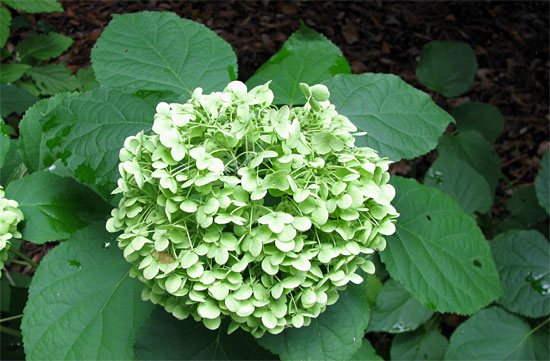

Hydrangea tree-like in the fall needs feeding. It must be brought into the ground at the beginning of September. To do this, you need to prepare a phosphorus-potassium complex. Hydrangeas do not need nitrogen in the fall.
How to restore a flower in spring?
Due to the poor resistance of hydrangeas to cold weather, winter frosts can have a very negative effect on the bush, and in some cases cause its death. If the culture does not show signs of life after wintering or develops very poorly, then it is necessary to help it. Those gardeners who do not or have not been able to cover the bushes for the winter may face a number of problems.
- Hydrangea diseases - from a weakened state, the bush cannot withstand a variety of diseases, of which there are a lot in spring due to the humid and warm environmental conditions.If blackening or any other stains begin to appear on the foliage, then urgent action is needed.
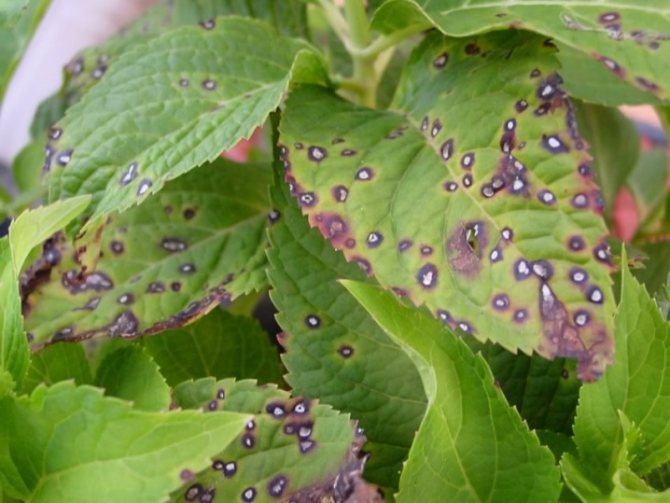

- Fungi - if the bush has been affected by fungal spores, you need to treat it with antifungal drugs, such as copper solution or Bordeaux liquid. The affected foliage must be removed immediately, and after 2 weeks the bush must be sprayed again. To prevent the problem from recurring, you should use drugs that suppress the fungus 1-2 times a month as a prophylaxis.
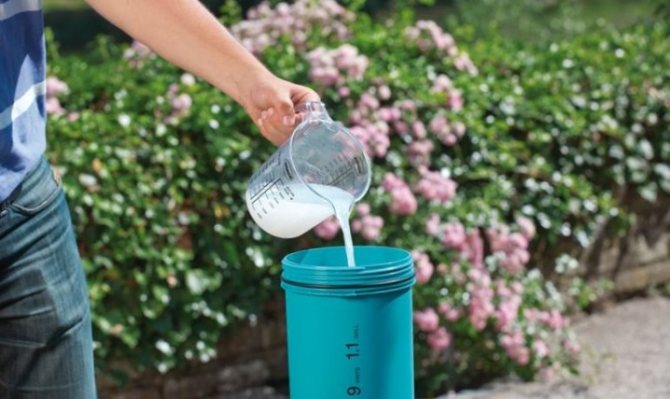

- Pests - when they appear, you need to use insecticides and look at the reaction of the bush. When pests reappear, chemicals must be used again.
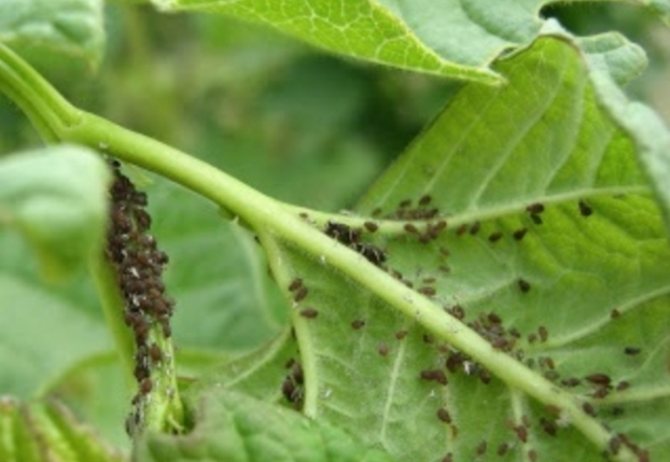

The poor development of the bush can be influenced by the alkali contained in the soil, the more there is, the worse the hydrangea feels. By adjusting the level of acidity of the soil, you can achieve the resumption of normal growth and development of the bush.
If the winter is cold, the tips of the shoots will be dry due to freezing. To help the plant regain strength, you need to remove all damaged parts, apply fertilizer and water the bush in a timely manner. With heavy damage, the hydrangea will not be able to bloom this year, but the bush will get stronger and please the next season.
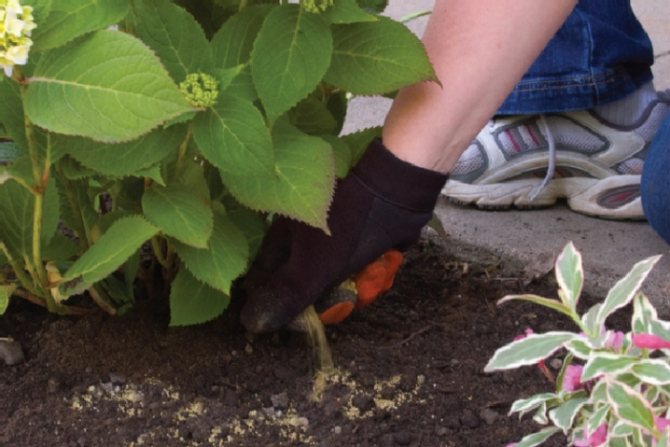

For information on how to prepare panicle hydrangea for winter, see the next video.
Transplanting hydrangeas in autumn
Care and planting of hydrangeas in a tree-like fall are carried out by gardeners according to certain rules. During this period, you can transplant the plant to another place. This is only true for tree varieties. In other types of hydrangea, due to such manipulations, problems with adaptation to new conditions may arise.
It is necessary to prepare for the autumn transplant process since spring. A trench is dug along the perimeter of the trunk circle. Its depth and width should be 30 cm. This trench is filled with compost. Then the soil is constantly watered. The hydrangea will take many new roots into this compost layer.
The transplant must be performed in September. First, the branches of the plant are tied with a rope. So they will not interfere, they will not break during transplantation. Along the outer edge of the previously created trench, the hydrangea is carefully dug in with a shovel. You must try not to damage the new roots. If the old shoots are slightly hurt, this is not a problem.
The pit also needs to be prepared in advance. The required soil mixture is introduced into it, as when planting new plants. Then the plant is transferred to a new location. The roots are straightened, sprinkled with earth. The root collar should be at the same level with the soil or slightly higher. In order for the hydrangea to take root better, pruning is carried out.
How to keep in a pot until spring?
Caring for a flower in a pot consists of the following points:
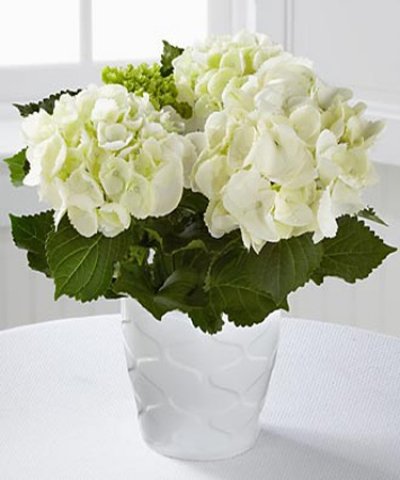

- carrying out all the manipulations preceding the dormant period (gradual preparation of the plant, pruning and, if necessary, transplanting);
- compliance with all the conditions necessary for the plant during hibernation.
She just needs dark and cold wintering... During this time, she manages to recover and gain new strength for the appearance of future flowers. If this condition is not met, the plant will be able to please the owners with its next flowering only after a year, or even more.
Hydrangea is an unpretentious plant, but its flowering is a magnificent sight. In order for her to give life to new flowers after a long winter, it is necessary to provide her with optimal conditions. They do not require any special knowledge and great floricultural experience, and the beautiful hydrangea will certainly thank you with lush balls of beautiful inflorescences.
See more photos below:
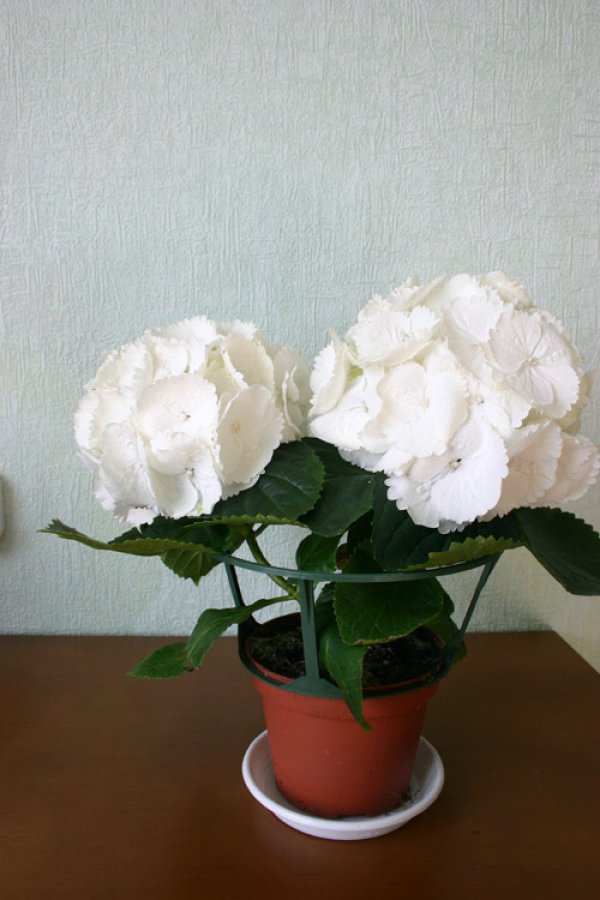

Pruning features
Hydrangea tree-like in autumn needs pruning. Some gardeners carry out this procedure in the spring. However, most experts agree that it is better to do this work in the fall. Pruning is performed when the movement of the sap in the plant slows down.This can usually be done as early as October.
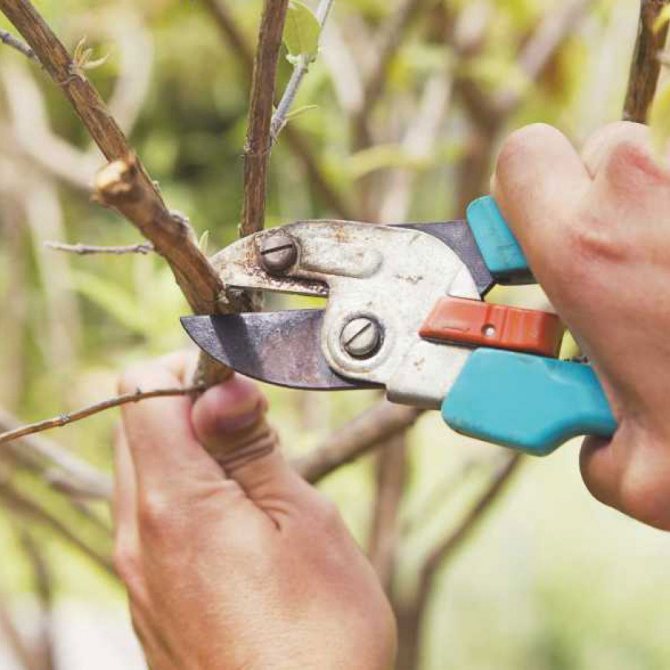

In large-leaved hydrangea, pruning is exclusively cosmetic in nature, since the flowers on it are formed on the shoots of the last year. But for tree varieties, it is more advisable to prune it in the fall. In such plants, inflorescences are formed on the shoots of this year.
It is worth considering that the hydrangea is pruned at the age of four years and older. Autumn pruning is safer than spring pruning. At this time of the year, the risk of harming the plant is significantly reduced, since it will be immediately clear that the sap flow in the trunk has slowed down. When the leaves have already fallen off, you need to remove dry, diseased shoots. Skeletal branches are not affected. If several shoots grow from one point, only one is left, but the healthiest and strongest.
Preparation for wintering
After pruning, you can prepare the plant for wintering. This process can be started as early as September. On hydrangeas, leaves are removed, leaving them only on the tops of the shoots. This will allow the green shoots to ripen faster. Next, fertilizers are applied. In October, you need to prune, and then think about creating a shelter.
If the bush is small, you can completely cover it with peat. Then it is covered with a film. If the plant is large, it is tied with a rope, and then very carefully the branches are pulled to the ground. On it, you must first make a flooring of boards. They are nailed to the ground with long nails. The bush is thrown with sawdust or spruce branches. From above, the plant is covered with lutrasil or other similar material.
Having considered the basic rules for the care and planting of hydrangeas in a tree-like autumn, you can grow a beautiful shrub that will become an adornment of landscape design.
Proper planting is of great importance in the successful vegetation of a plant. Planting hydrangeas in the open ground in autumn is described in detail in this article.
The perennial flowering shrub hydrangea, although it requires a lot of care from the gardener, is a very popular plant in personal plots. This is not surprising - a lush hydrangea bush, strewn with large caps of blue, white or pinkish-green inflorescences, leaves no one indifferent.
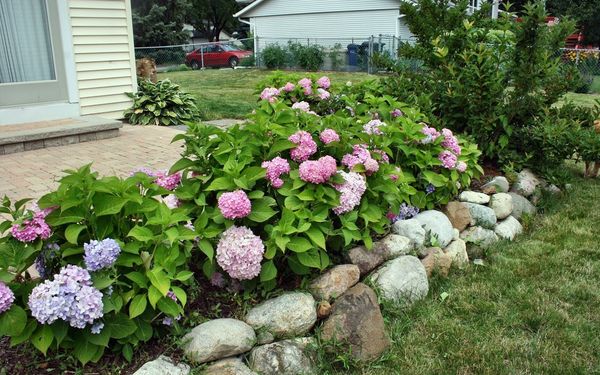

When is it better to plant hydrangea - in autumn or spring?
This plant can be planted in spring and fall. The gardener himself is free to choose a time convenient for himself, taking into account all the pros and cons of planting.
The main advantage of the spring planting of hydrangeas and other perennials is the warm weather, which allows the plant to successfully adapt to a new place. In the northern regions of our country, where autumn is cold and short, most perennials are recommended to be planted in spring.
The disadvantages of early spring planting include the exactingness of plants for frequent watering and the need to shade seedlings if hot weather is established.
Planting hydrangeas in the fall is possible, provided that the seedling is well developed. The bush is placed in the soil at least 4 weeks before the onset of frost, which can penetrate 10-15 cm into the soil.
The advantage of the autumn planting can be considered favorable air and soil humidity due to autumn rains and comfortable, not hot weather.
When to plant hydrangea in open ground in the fall according to the Lunar calendar
In 2020, favorable days for autumn planting of plants in the fall are as follows:
- September: from 10 to 19, 23 and 24, from 26 to 30;
- October: 1 to 3, 8, 10 to 16, 20 to 23.
Plants are not disturbed on full and new moon days.
In the spring of 2020, it is recommended to plant hydrangea in the ground on the following dates:
- April - 7 and 8, 20 and 21, from 24 to 26, 29 and 30;
- May - 1, 4 and 5, 17 and 18, from 21 to 23, from 26 to 28.
Compliance with the dates of planting and other work with plants in accordance with the lunar calendar allows the gardener to avoid problems with pets. On favorable days, flowers and seedlings are easier to transfer transplanting and pruning, harvested seeds show high germination.
Planting time of hydrangeas, depending on the region
The climate of our country is diverse and the timing of planting hydrangeas in the fall in open ground can vary significantly.
In the Central lane and the Moscow region, panicle and tree hydrangea are planted in September. This is done depending on the weather, at the beginning and middle of the month.
In the Leningrad region, the shrub is placed in a flower garden in early and mid-September. The moist climate of the hydrangea region is only beneficial. It is a rare plant that loves moisture in the soil.
In the Urals and Siberia, with their short autumn, the climate is not favorable for the autumn planting of hydrangeas. Although experienced gardeners point to the possibility of planting the plant at the end of August, provided that it is developed: the trunk and branches are fully ripe and have a good root system.
In these regions, for the winter, it is necessary to insulate the hydrangea with spruce branches, fallen leaves, wood shavings and lutrasil.
The south of Russia is characterized by long warm autumn and mild winter. In these latitudes, hydrangea is planted in October. And even seedlings of large-leaved hydrangea will take root when planting in the fall.
In Ukraine, the climate is similar to the weather in the southern regions of Russia, the timing of planting perennials in autumn is the same. This is the end of September - October.
In Belarus, hydrangea is placed in the open field from mid-September to early October, depending on the prevailing weather.
A gardener who takes his plants seriously should keep a notebook of his weather observations. Significant weather phenomena are annually introduced into it: snow melt in spring, end and beginning of frost, amount of precipitation, maximum and minimum temperatures during the year. Analysis of these observations will help to identify a favorable time for planting and other work with plants in a particular area.
Creation of conditions for growth and development
Proper care during the growing season is the basis for the timely ripening of the shoots and, as a result, a good wintering of the plant.
During the period of active growth and flowering, provide the hydrangea with abundant watering, avoiding overdrying the soil. Moreover, on heavy soils, there must be drainage. Top dressing with mineral fertilizers should exclude nitrogen, or contain it in a small amount. Since August, it is advisable to apply only potash fertilizers to increase winter hardiness. The introduction of manure and liquid organic fertilizers is completely excluded.
The creation and maintenance of a mulch layer in the root zone solves two important tasks: moisture is retained in the soil and protection of the root system in winter is ensured.
Hydrangea paniculata - Hydrangea paniculata
Planting hydrangeas correctly in the fall
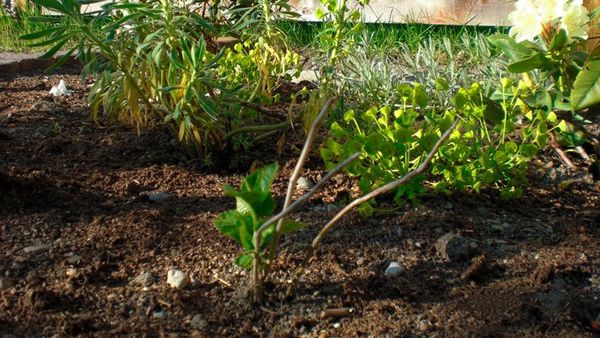

The first step in planting hydrangeas outdoors in the fall is choosing a location for the shrub. The perennial loves the sun and warmth, it is placed in a flower garden near the house or fence, on the south side. In this case, the wall is a protection from the cold wind and an additional accumulator of solar heat.
Sometimes the hydrangea is placed on a lawn, in an open, sunny place. It is undesirable to plant it near other shrubs and trees - the plants will compete with each other for moisture and nutrition.
In one place, a hydrangea bush can grow for 10 or more years.
Soil composition
The soil is prepared for the plant, guided by the following requirements:
- loose structure;
- moisture capacity and air permeability;
- high humus content.
- The ideal soil for hydrangea is fertile loam with a neutral or slightly acidic reaction.
By changing the acidity of the soil, it is possible to influence the change in the color of the petals of the large-flowered hydrangea. On neutral soils, the flowers will be white or cream, on acidic - blue, on slightly alkaline - pink.
Sand is added to heavy loams - up to 10 kg into the planting hole and drainage from expanded clay, crushed stone or pebbles is poured. High-moor peat and humus are added to light sandy soils.
What should be a seedling
What should look like a garden hydrangea seedling, intended for planting:
- seedling length from 50 to 90 cm;
- age not younger than 3 years;
- at least two young live shoots with well-developed buds;
- bark without damage;
- roots are alive, well developed.
Before planting, it is recommended to soak the seedling in a fungicide solution (Maxim, potassium permanganate, phytosporin) to protect against fungal diseases.
Planting hydrangea paniculata
On the selected site, a planting hole is dug 40 by 50 cm in size and about 40 cm deep. The distance between the hydrangea bushes during row planting should not be less than one and a half meters.
The pit is filled with soil composed of the following components:
- leafy soil or sod humus 2 parts;
- rotted manure or compost (at least 3 years old) 1 part;
- sand 1 part;
- peat 1 part.
For 10 kg of this mixture, add 20 g of potassium sulfate, 60 g of superphosphate.
Stages of planting paniculate hydrangea in the fall in open ground:
- The prepared pits are left for a couple of days so that the earth settles and the fertilizers dissolve.
- A hydrangea seedling is placed in the center of the pit on a formed mound so that all the roots can be evenly spread. The root collar of the bush should be 2 - 3 cm above the soil level.
- After covering the roots, the seedling is watered abundantly and the soil is mulched with peat, wood chips, spruce needles.
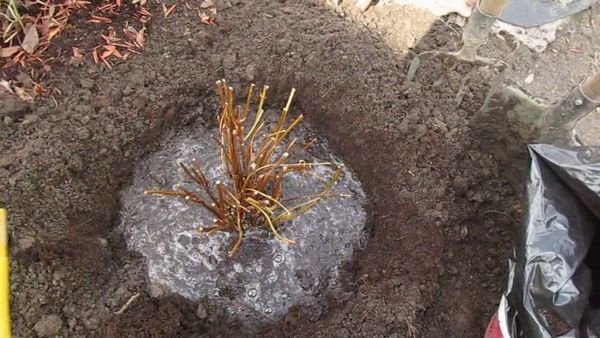

While the seedling is adapting to a new place, it is necessary to keep the soil moist. Lack of moisture affects the hydrangea destructively. It is useful to water the plant with acidified water, adding 20 g of citric acid powder to a 10 liter watering can.
Planting hydrangea tree feature
Unlike the paniculate variety, the tree hydrangea requires more space. It is planted at a distance of 2 m or more from other large plants.
The root collar of the seedling is left flush with the surface of the ground, without deepening or raising it high.
You need to water the seedling only with settled and not cold water. If mulch is not applied on the ground, it is necessary to loosen the soil after watering.
Other ways to plant hydrangeas
Having an adult hydrangea bush in the garden, it can be propagated by getting several new plants. A perennial can be propagated by seeds, dividing the bush, shoots and cuttings. Below we will discuss each of these methods of planting hydrangeas outdoors in the fall.
The seed method is the longest and the least common among amateur gardeners. Fresh hydrangea seeds are sown in the fall on a specially prepared garden bed.
In the spring, the sprouts that have appeared are looked after, as with any seedlings: they water, weed, fertilize.
Divide the bush when transplanting hydrangeas (except for the paniculate variety) in the fall to a new site. The dug out plant is divided into parts so that on each part of the rhizome there are developed growth buds. Sprinkle the cuts on the roots with crushed charcoal.
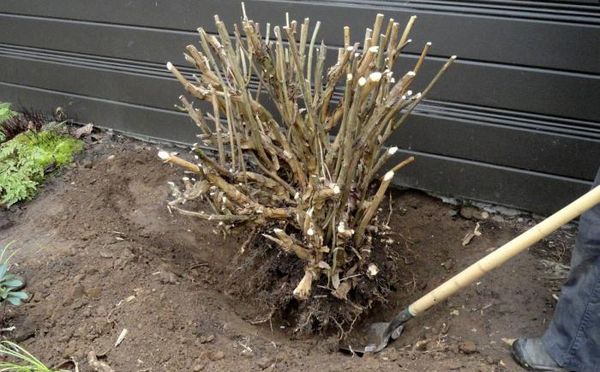

In late summer or autumn, root growth can be separated from an adult bush. To do this, a 5-7 cm layer of soil is raked off from the base of the bush. The shoots are cut off from the bush, trying not to damage the roots of the mother plant. A young bush is planted for growing on a bed with loose and nutritious soil.
After 2 years, the matured seedling is transplanted to a permanent place.
In September, you can cut cuttings from a hydrangea bush. Twigs, 10 cm long, are cut from the not stiff lower shoots, from the sunny side of the bush.
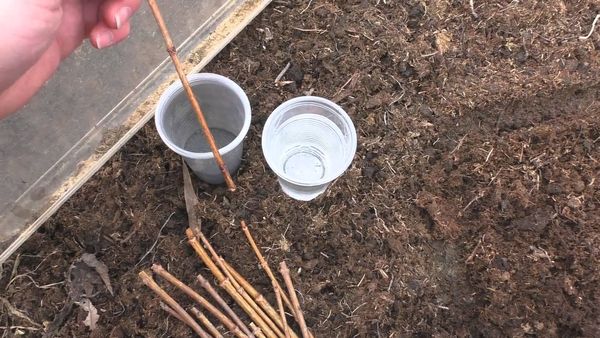

The top of the cutting is cut off, the leaves are partially cut off to reduce moisture evaporation. The upper cut on the handle is sealed with wax or ordinary plasticine.
Hydrangea planting material from cuttings is planted in the soil prepared in advance. In the fall, cuttings are planted in boxes or pots and kept in the winter at home. The soil mixture for them is prepared from a mixture of peat, soil for azaleas and sand.
The cuttings are immersed in the soil no deeper than 3 cm. The distance between the branches is 5 cm. After planting, the surface of the earth is covered with dry clean sand, with a layer of 2 cm. The box is covered with a greenhouse made of film from above.
For about a month, the cuttings are watered once a week and sprayed periodically. Then they remove the greenhouse, by the time the cutting takes root, it is not needed. Now, until spring, young plants are kept as ordinary houseplants: they water, loosen the soil, feed.
Video: transplanting hydrangeas in the fall
How to care for in winter?
Indoor hydrangea is deciduous plant, therefore, it is characterized by the dropping of leaves before its dormant period. This phenomenon occurs once a year, before the onset of severe cold weather.
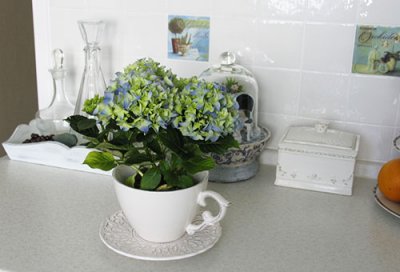

In order for her to safely survive the hibernation regime and thank her owners next year with abundant and long flowering, she needs to provide
a number of prerequisites.
Preparation for winter should be started already in the fall. It includes making some changes to the care of the plant.
Before the onset of the cold time at a gradual pace shrinks the intensity of watering the hydrangea, feeding stops.
Dormant period
The dormant period begins shortly after the end of flowering and lasts approximately 2-3 months. When the hydrangea has faded, the plant is pruned and moved to a cool, dry place.
Light mode
She is not picky about light. Important: this plant is sensitive to direct sunlight, so this factor must be eliminated immediately.
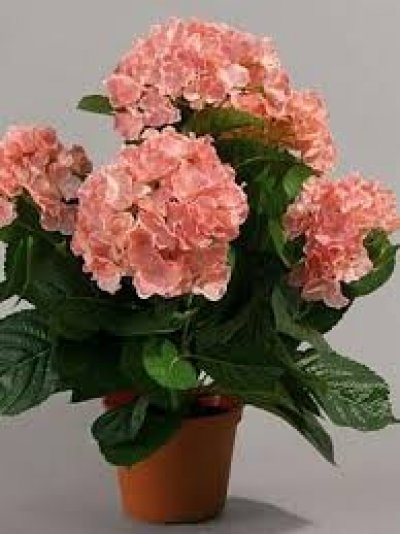

Hydrangea can grow well in partial shade, and in the winter season
slight blackout she just necessary for a good rest and a set of strength for the upcoming flowering. In rest mode, the lighting for this flower is not significant.
Temperature regime
Indoor hydrangea prefers cool... If in the warm season it is recommended to keep it at a temperature from +15 to +22 degrees, and at the same time protect from sudden changes in temperature and drafts, then in winter it will feel great at 5-9 degrees with a plus sign.
The optimal place for keeping in winter is dry and ventilated basements and semi-basements.
It is recommended to transfer the hydrangea to an apartment or house, to its usual place in late winter or early spring (February-March), when the plant begins to germinate kidneys.
Watering
As noted above, preparing hydrangeas for wintering begins with a reduction in watering. During hibernation should receive minimum moisture... The plant should be watered occasionally, and then only in order to prevent the earthen mixture in the pot from drying out.
If it is moved to the basement for the winter, its need for moisture is significantly reduced, so watering at this time is possible at all to terminate.
Shelter hydrangea for the winter
Young plants must be wrapped before the onset of winter frosts. This operation can only be abandoned in the southern regions of the country.
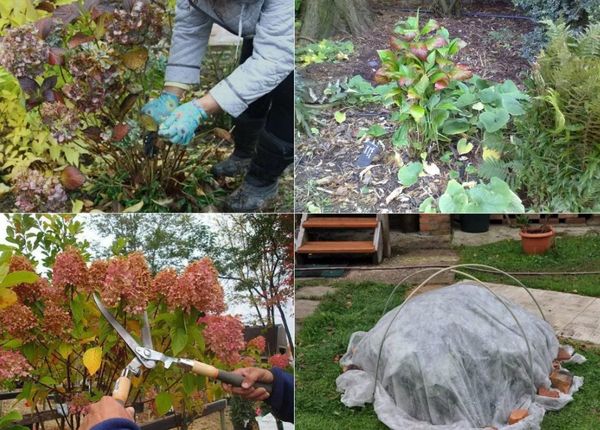

With the onset of weather, with a daytime air temperature of -2 -5 degrees, the bush is heaped with sawdust, peat, straw cutting to a height of 30 cm.
Hydrangea shoots are tied in a bundle or individually bent to the surface of the ground and fixed in this position. Spruce branches, burlap or agro-cloth are thrown over them.
In the spring, the shelter is removed, preventing the plant from heating up.

